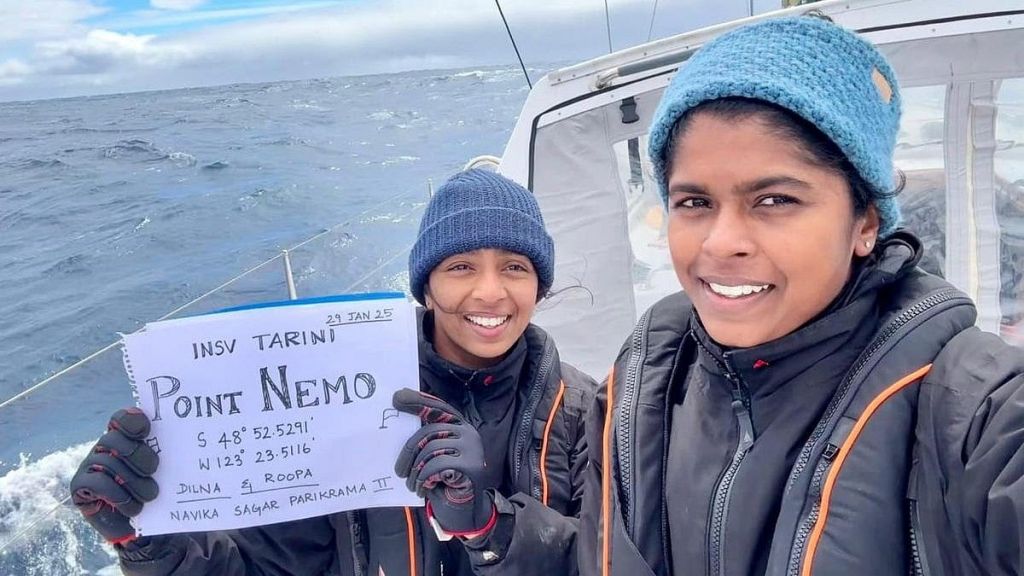
Breaking barriers in maritime exploration, Lieutenant Commander Dilna K and Lieutenant Commander Roopa A of the Indian Navy achieved an extraordinary milestone by reaching Point Nemo, the most inaccessible place on Earth. This location is so distant from land that astronauts aboard the International Space Station are often closer to it than any human on Earth.

How did their journey begin?
Their journey was part of the Navika Sagar Parikrama II, a mission under the Indian Navy to advance maritime exploration and scientific discovery. Aboard the Indian Naval Sailing Vessel (INSV) Tarini, they relied solely on wind power to propel them forward, demonstrating resilience as they endured fierce ocean currents and unpredictable storms. Their vessel had no engine and they sailed manually along with the wind currents.
Setting sail from Goa on October 2, 2024, the officers first arrived in Lyttelton, New Zealand, in December 2024. The most demanding leg of their journey-a 5,600-nautical-mile voyage to Port Stanley in the Falkland Islands-followed, with no land in sight for thousands of kilometers. The vastness of the open ocean and the profound silence of isolation added to the intensity of their mission.
In a remarkable milestone for maritime exploration, Lieutenant Commander Dilna K and Lieutenant Commander Roopa A aboard #INSVTarini crossed Point Nemo on 30 Jan 2025, during Navika Sagar Parikrama II.
— PB-SHABD (@PBSHABD) January 30, 2025
Find the complete story on #PBSHABD. Free to sign up and use for media… pic.twitter.com/SieO0gsKVm
The final resting place for spacecraft
Aside from being a test of human endurance, Point Nemo serves a unique function in space history. It is recognized as the 'spacecraft graveyard', a controlled crash site for retired satellites and space stations to prevent them from re-entering populated areas.
As part of their expedition, the officers gathered water samples from this rarely studied region. The National Institute of Oceanography will analyse these samples, contributing vital insights into marine biodiversity and oceanic conditions in one of the least explored parts of the world.
Lt Cdr Dilna’s celebrates her birthday with Lt Cdr Roopa in the Southern Ocean, as the two young naval officers continue their
— Rajat Pandit (@rajatpTOI) February 8, 2025
arduous circumnavigation of the globe on their sailing boat INSV Tarini#NavikaSagarParikrama pic.twitter.com/cY5fQuH64p
What may seem like a simple sailing journey to some is, in reality, one of the most grueling maritime challenges. Lieutenant Commander Dilna K and Lieutenant Commander Roopa A proved that courage, skill, and perseverance can overcome even the harshest environments, marking their place in history through sheer determination.